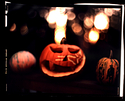My negatives are scaled to grade 2 paper, some variance over the years and between manufactures which cause the most variability. What I do is test a new paper with a step wedge, fixed and clear strip of film or sheet film then start at a test strip just fixed and washed to match paper base, then at a working aperture expose the strip every 3 seconds in increasing to really dark then find the strip with the best contrast range. Once I find a time sometimes I fuss with the developer dilution and time in the soup. Right now I'm using PW Elite VC, Foma RC and FB and HVC and grade 2 and 3. PW elite is fast, around 9 seconds for a working print, Foma somewhat slower. I still have a 1/2 box of Slavich which seems to slower yet. I have times on file for Multitone Ilford, and and a few others. I'm switching developers to Clayton P 20 so I will need to repeat.
To find your personal E.I or personal ISO, if you don't have access to a densitometry, I don't, you can shoot a ring around by setting up a scene in open shadows or a overcast day with black fabric with texture, white fabric a black, gray card and model for skin tones, start at ISO 25 and work up to 1600 or 3200, a small white broad with the ISO included in the frame is helpful. I find with my newer bodies with electronic shutters and matrix metering shoot pretty much at box speed. There are expectations, Foma 400 matches the Foma data sheet at 320. My older all mechanical bodies with average metering are all over the map. I've thought about getting a densitometer just have not gotten to the point that I think that a precise measurement will be value added.






